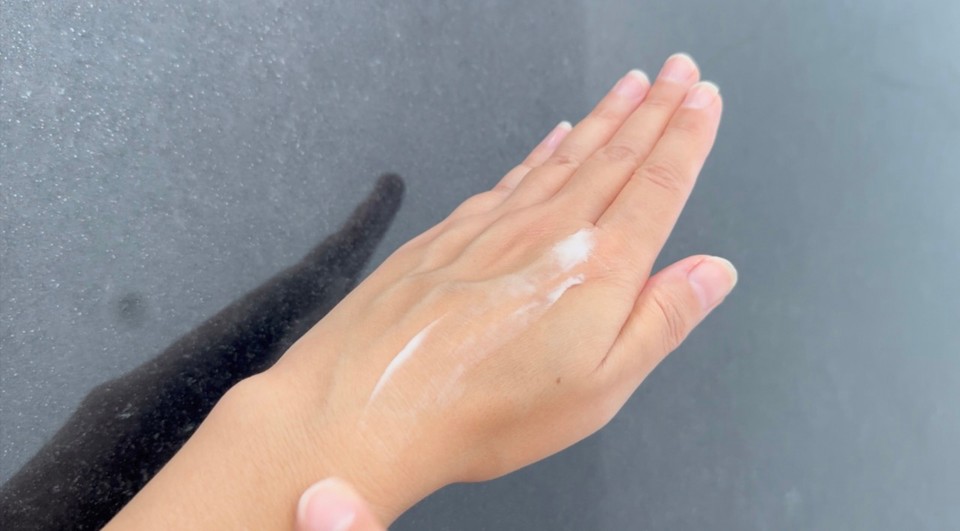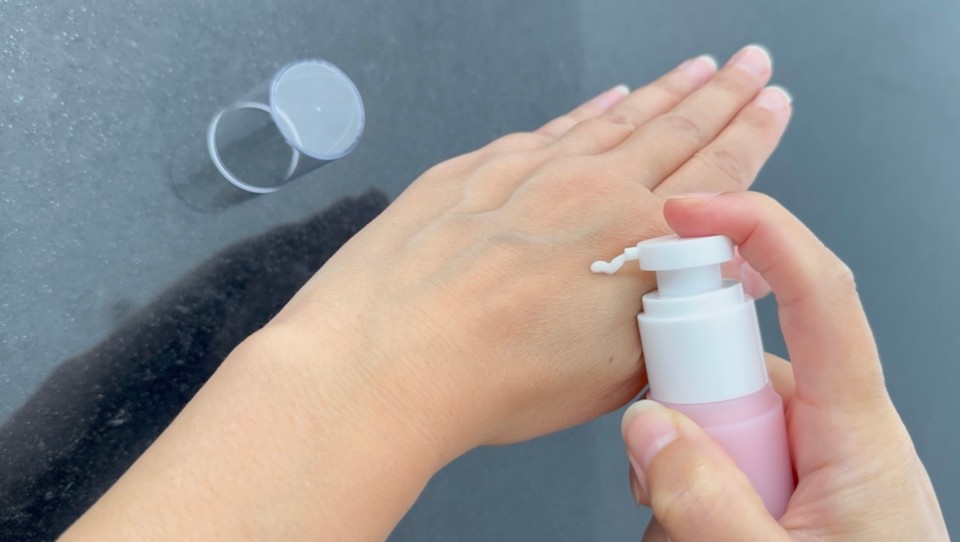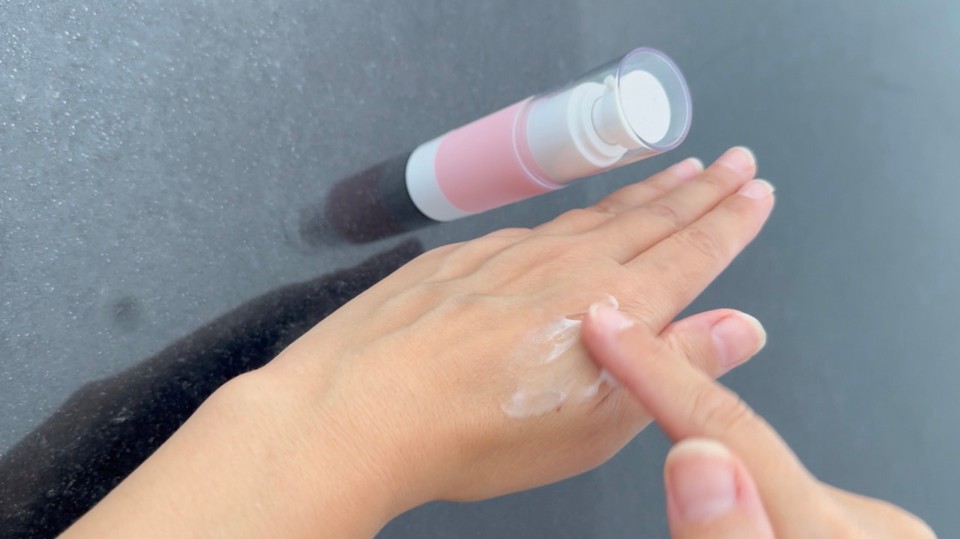Chamomile In Cosmetics Guide And Formulas For Skin Care Products
In this post, I'll give you a summary of the ingredient - chamomile, and later on in this post, you can find information on how to make a chamomile glycerite extract, a chamomile oil infusion and skincare formulas that include chamomile in them.
You can also find links to learn about chamomile in cosmetics and skin care.
Chamomile (Matricaria chamomilla or Chamaemelum nobile) is a well-known herb with a rich history of use in traditional medicine. It is often used in today's skincare. Known for its soothing properties, chamomile is incorporated in various cosmetic products, including balms, creams, oil infusions, and hydrosols. Its effects on the skin are well-documented, and many studies support its efficacy and benefits.
With its anti-inflammatory properties, chamomile is highly effective in alleviating redness and swelling, making it especially beneficial for skin conditions such as eczema, rosacea, and acne. Key compounds in chamomile, including bisabolol and matricin, reduce inflammation and promote healing. Clinical studies have demonstrated that chamomile extracts can relieve symptoms of inflammatory skin issues, thereby enhancing overall skin appearance and comfort.

In addition to its anti-inflammatory effects, chamomile is rich in antioxidants like apigenin and luteolin. These antioxidants help combat oxidative stress by neutralizing free radicals, which can contribute to premature skin aging. By mitigating oxidative damage, chamomile supports skin health and bolsters the skin's defense against environmental factors, helping to reduce the appearance of fine lines and wrinkles.
chamomile is also renowned for its calming and soothing properties, making it ideal for sensitive or reactive skin. Its ability to alleviate discomfort and diminish redness makes chamomile a staple ingredient in various skincare formulations designed for delicate skin.
Moreover, chamomile supports the skin's natural healing processes. It aids tissue regeneration, benefiting minor cuts, scrapes, and other skin irritations. The herb's antiseptic properties help prevent infections in minor wounds, promoting overall skin health and repair.
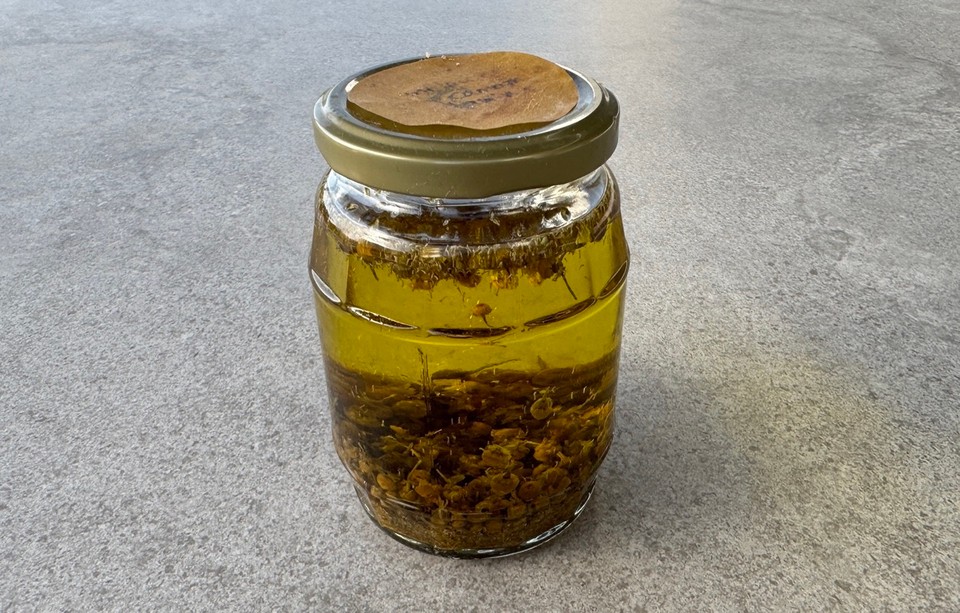
Applications in Cosmetics
chamomile's benefits are harnessed in a variety of cosmetic products:
Balms: chamomile-infused balms are formulated to deliver intensive moisture and healing. They are handy for treating chapped lips, dry patches, and minor skin irritations. The calming properties of chamomile in these balms make them practical for sensitive or irritated areas, providing soothing relief and repair.
Creams: chamomile is frequently incorporated into facial and body creams due to its gentle nature and effectiveness in reducing inflammation and redness. These creams are ideal for sensitive skin, offering hydration while minimizing irritation. Additionally, chamomile's anti-ageing properties make it a valuable component in anti-wrinkle and rejuvenating creams.
Oil Infusions: chamomile oil infusions are created by steeping dried chamomile flowers in a carrier oil, such as jojoba or almond oil. This process extracts the beneficial compounds from the flowers, resulting in a soothing, aromatic oil that can be used for its healing properties. chamomile oil is commonly added to homemade skincare products or applied directly to the skin to relieve irritation and promote relaxation.
Hydrosols: chamomile hydrosol, a byproduct of steam distillation used to extract chamomile essential oil, is a gentle, water-based product that retains many of chamomile's beneficial properties. It can be used as a facial toner or mist to refresh and soothe the skin. Hydrosols are particularly suitable for sensitive skin, offering a lighter alternative to essential oils.
Face Masks: chamomile is also included in face masks, which help calm inflammation and redness. Its hydrating and soothing effects make chamomile an excellent choice for masks that rejuvenate and soothe tired or irritated skin.
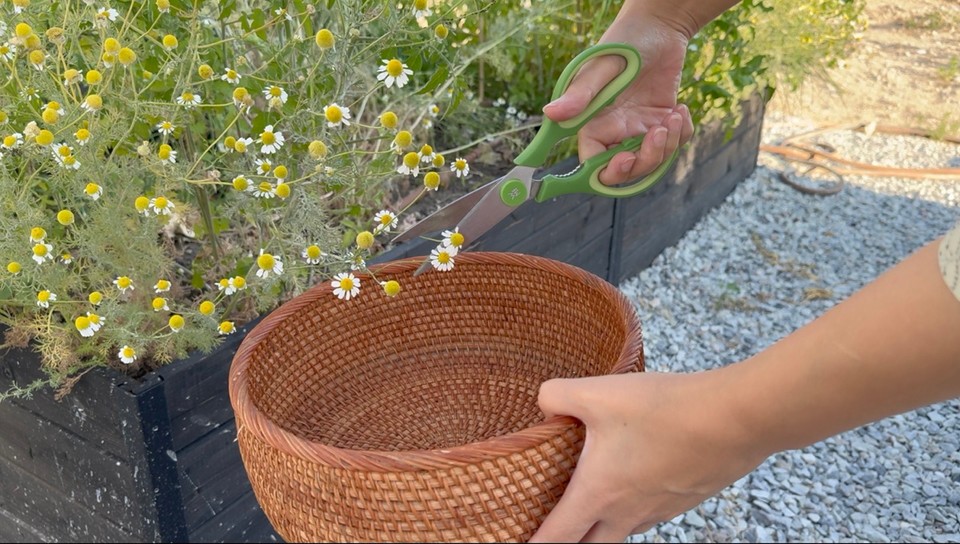
Research and Studies examples
Anti-inflammatory Effects: Research published in the journal Phytomedicine has highlighted chamomile's anti-inflammatory activity, showing its potential to reduce skin inflammation and irritation. This supports its use in managing conditions like eczema and dermatitis.
Antioxidant Activity: A study in the Journal of Medicinal Food has demonstrated chamomile's significant antioxidant properties. These findings reinforce chamomile's role in combating oxidative stress and maintaining skin health.
Wound Healing: According to research in the Journal of Wound Care, chamomile extract aids in wound healing, which supports its application in treating minor skin injuries and enhancing skin repair processes.
To read more about chamomile in cosmetics:
https://www.ncbi.nlm.nih.gov/pmc/articles/PMC9611340/
https://www.cir-safety.org/sites/default/files/chamom022013slr.pdf
https://www.mdpi.com/1420-3049/28/1/133
https://skintypesolutions.com/blogs/skincare/chamomile-in-skin-care
Now, let's move on to some formulas using chamomile. The first formulas are for chamomile oil infusion and chamomile extract, and then you have formulas for chamomile balm and chamomile lotion.
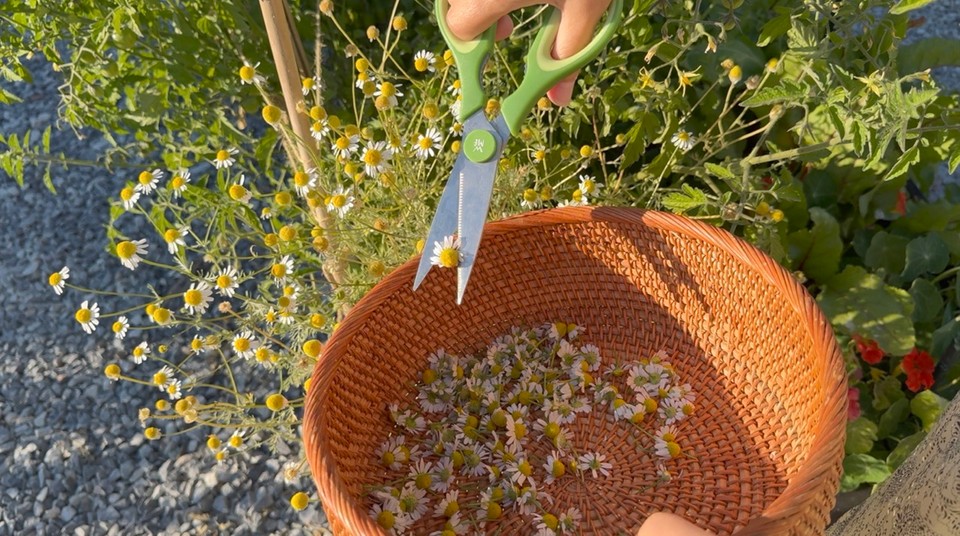
Always do a patch test before using a new product, to ensure you don’t have any skin reactions or allergies.
Chamomile oil
Ingredients:
- Chamomile dried flowers 15-20g
- Carriel oil 120g
- Vitamin E 0.4g (optional)
You can use the cold method, you can find the information here for the cold method. You need to leave the jar to infuse for 4-6 weeks before straining and using the oil. Or the hot method which can speed up the time of the infusion and you could use the chamomile oil the same day.
For carrier oil you can use: sweet almond oil, sunflower oil, olive oil, hazelnut oil, grapeseed oil, cottonseed oil or any carrier oil you wish to infuse.
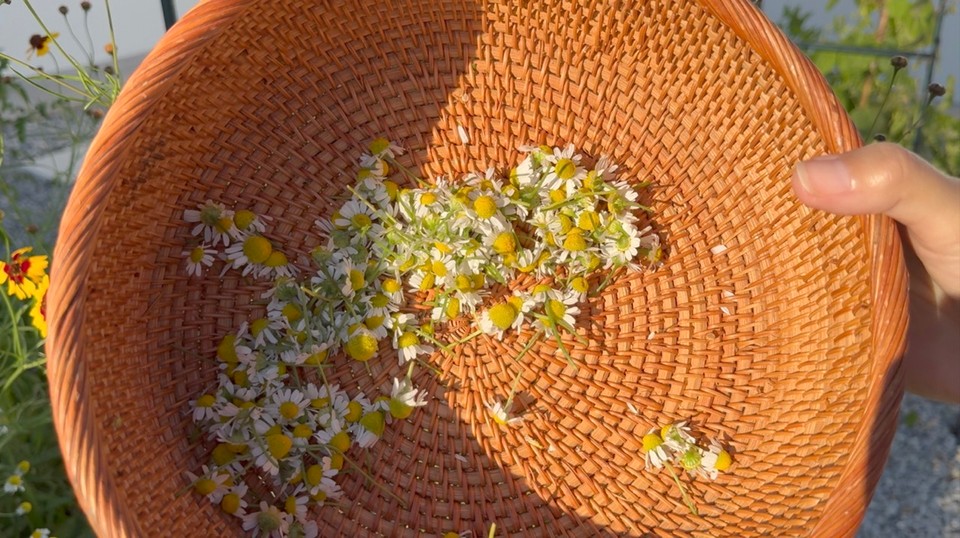
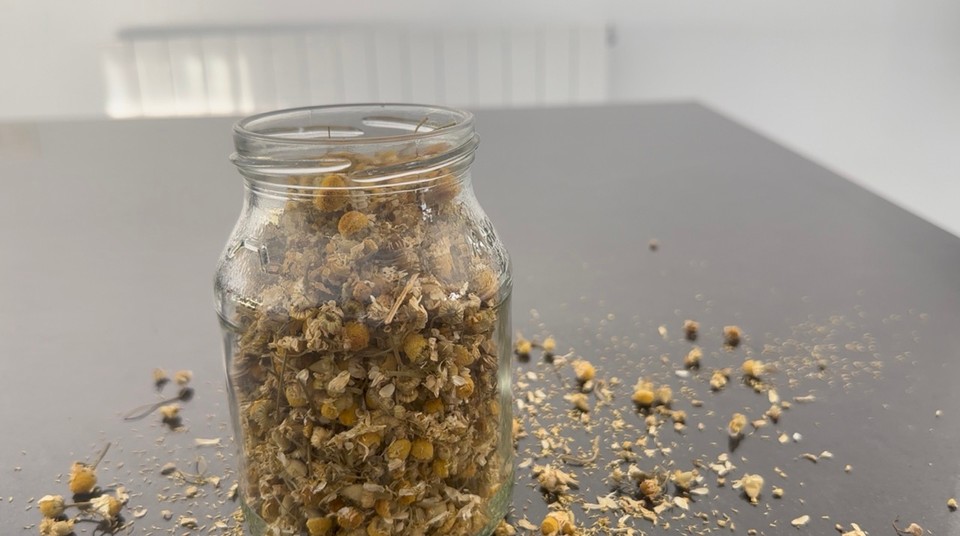
Hot method:
- Fill a jar with the chamomile dried flowers and the carrier oil. I dried the chamomile flowers I grew, collecting the flower heads. After collecting many flowers, I left them to dry for two weeks (leaving them in a ventilated area not close to direct light). You can buy already dried flowers and use them.
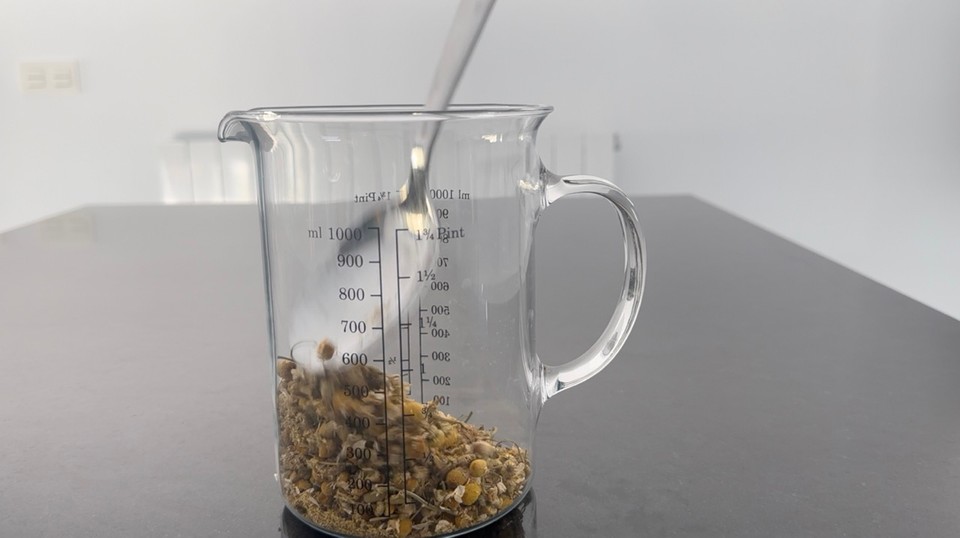
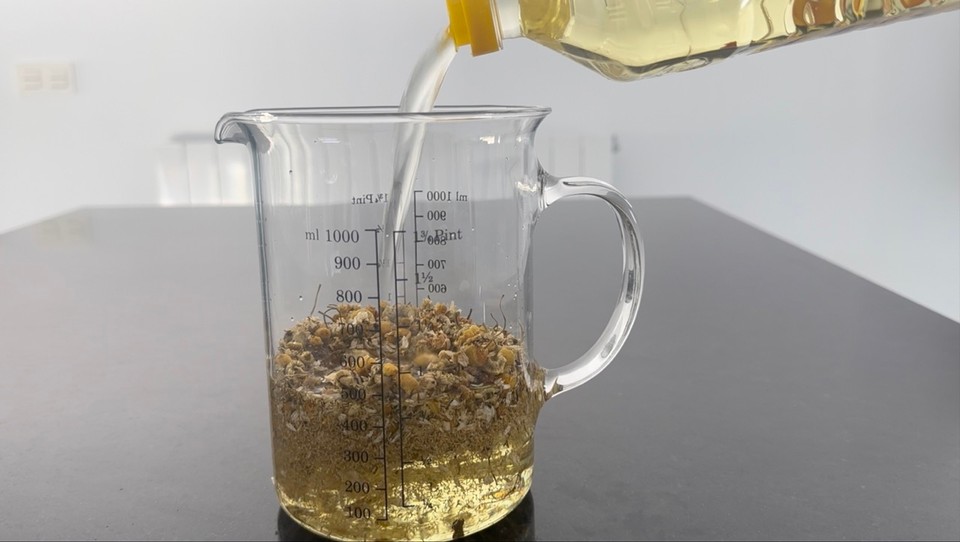
- Place the heat-resistant jar (40-42°C) for 1-2 hours in a double boiler on low heat. Stir the chamomile flowers every 15-20 minutes while in the double boiler.

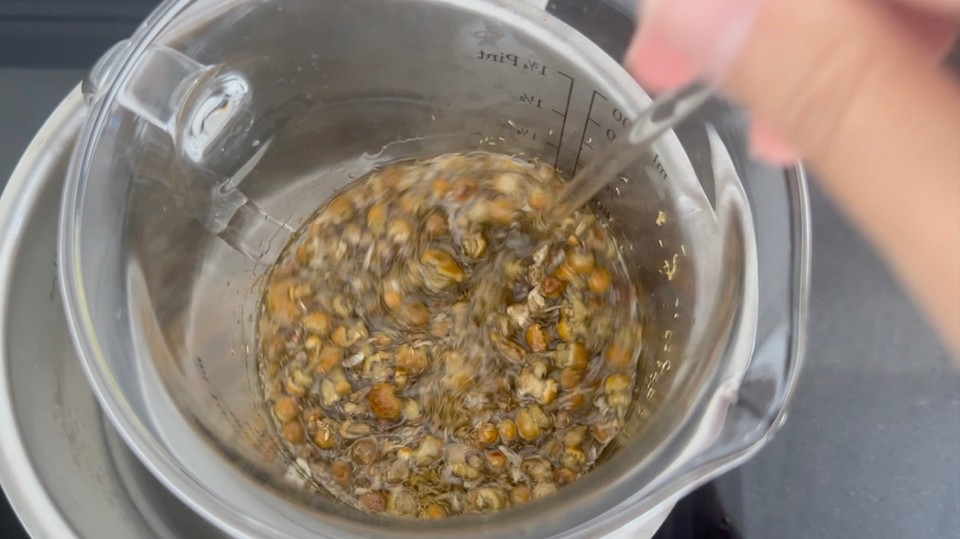
- Remove (with caution) from the heat. Use oven gloves or kitchen tweezers to avoid burning your hands.
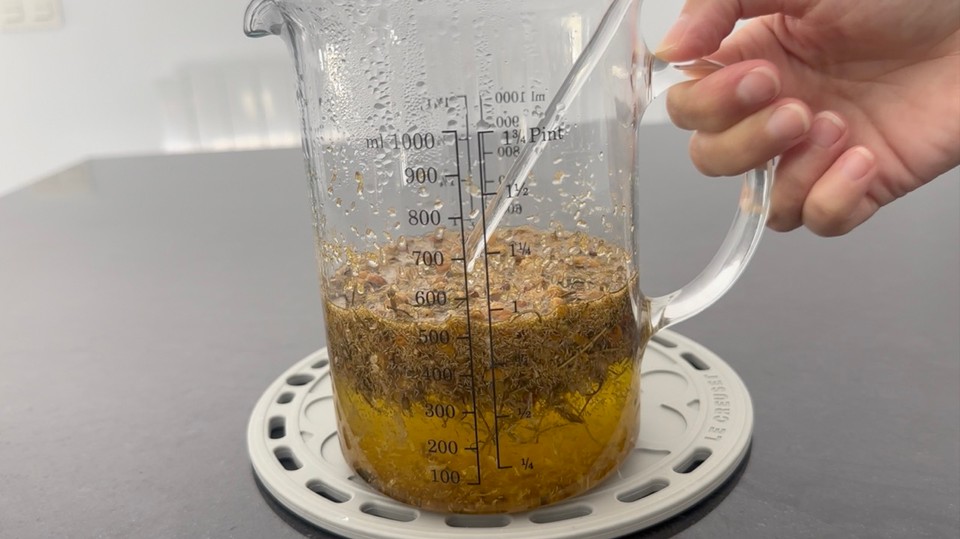
Let the infused oil cool down to room temperature.
Strain the flowers using a cheesecloth or a clean sock. You can use the flowers in a soap recipe for texture or exfoliation similar to this oats soap (If you grind the flowers, you will get a gentle exfoliating soap).
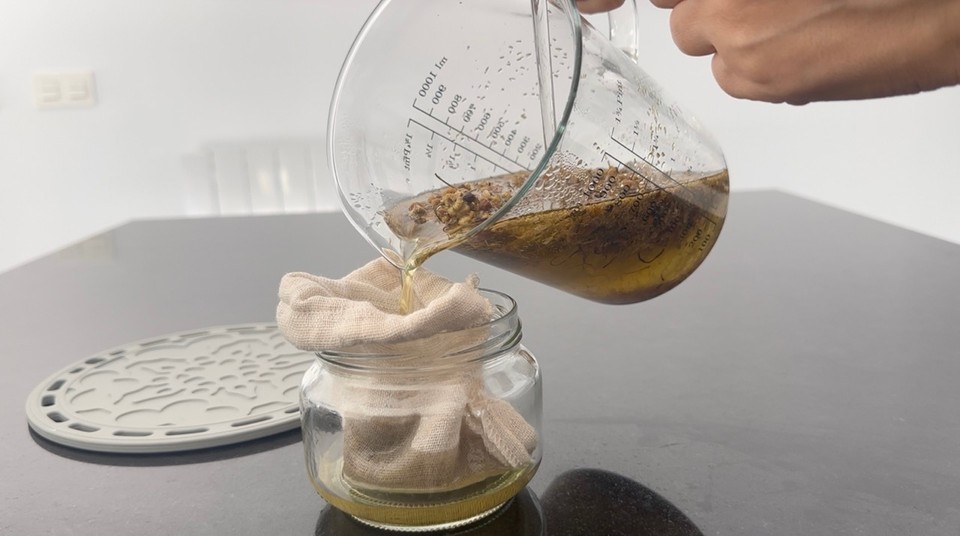
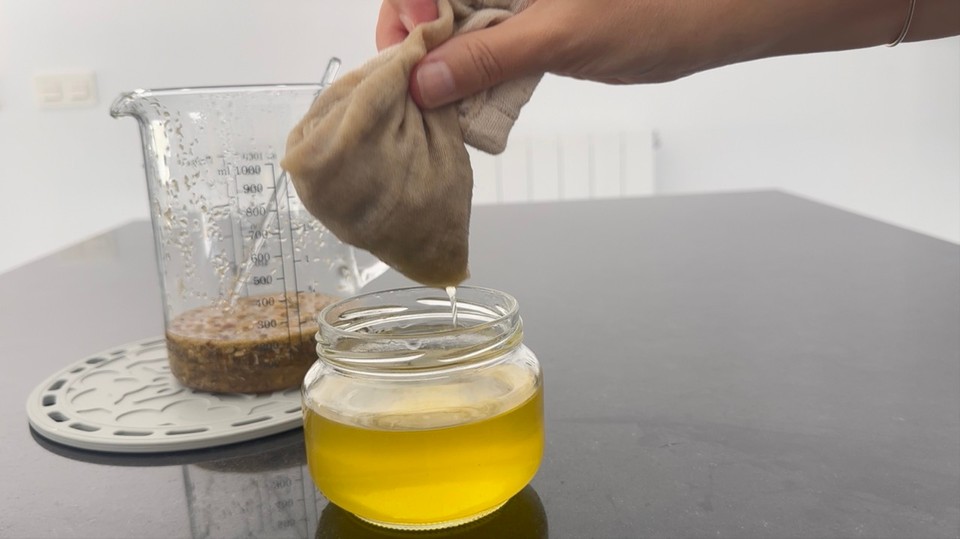

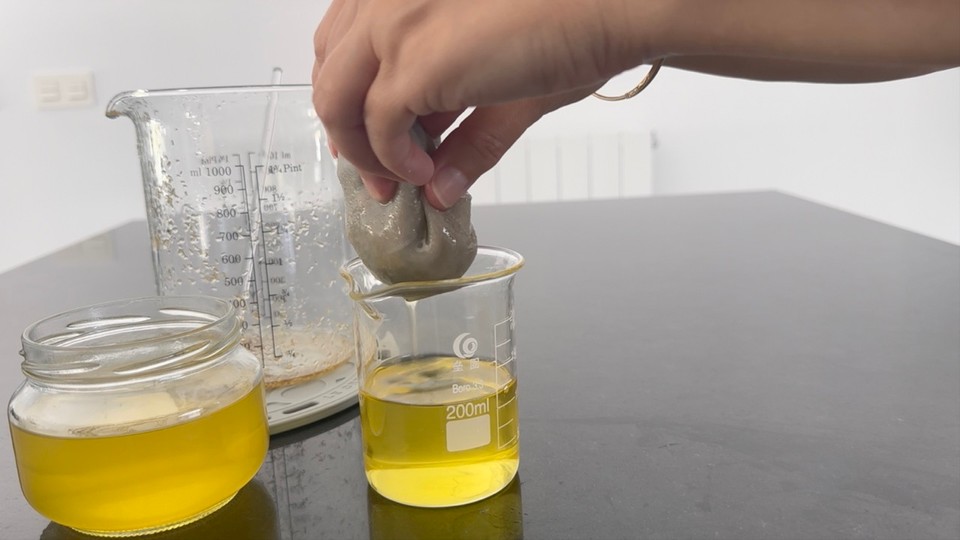
- Add the vitamin E (optional) and stir.
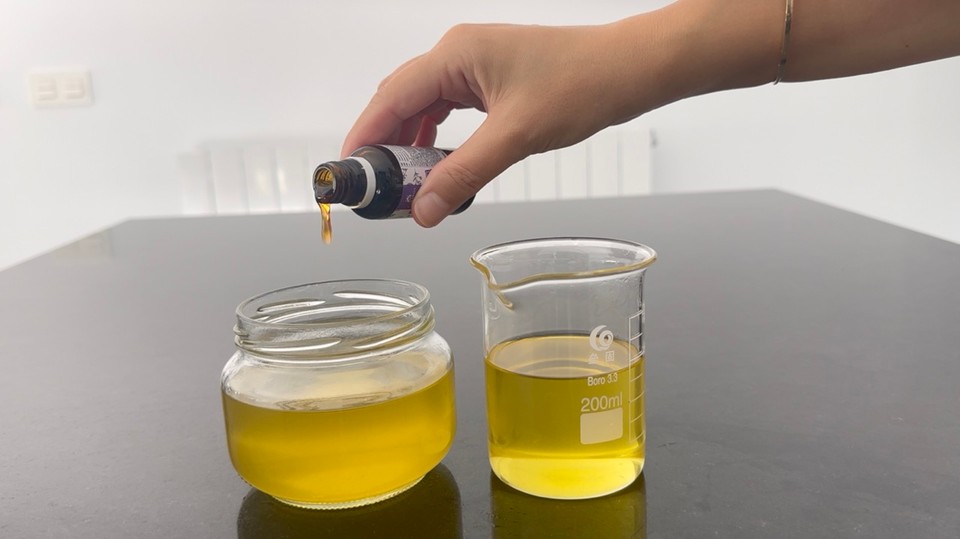

- Store the infused oil in a jar and close the lid. Place the jar in a dark place away from direct light or heat.
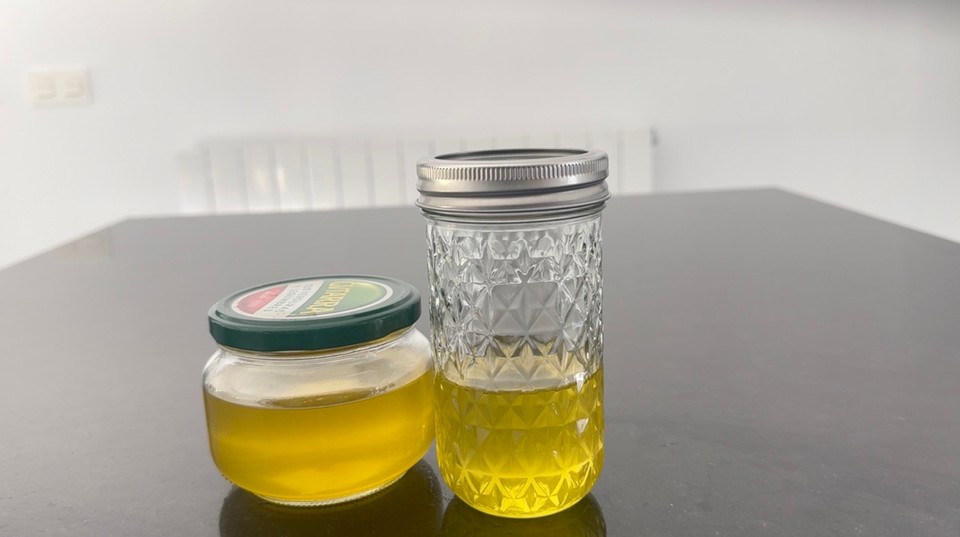
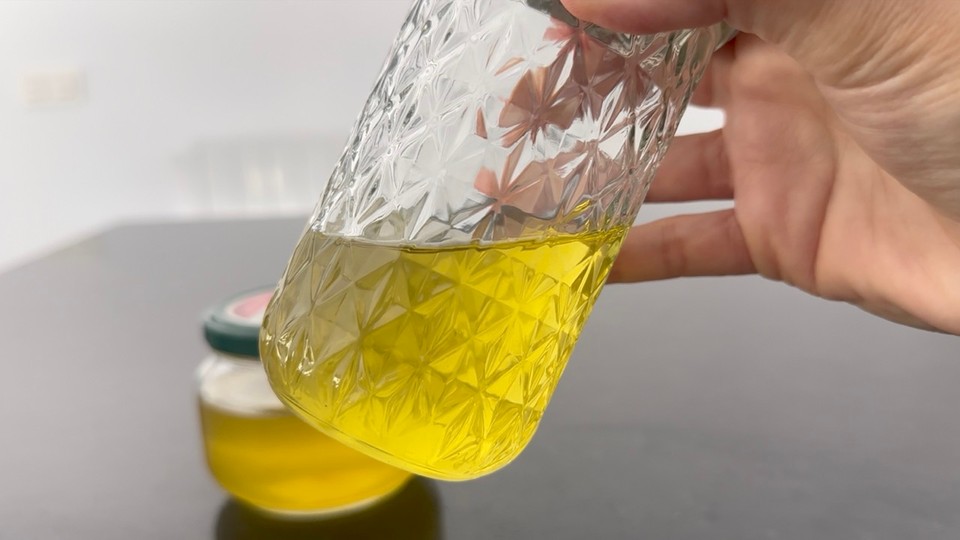
- Use this oil in any formula you wish to incorporate chamomile oil.
Chamomile glycerin extract
Ingredients:
- Dried chamomile flowers 5g
- Glycerin 50g
This extract is made with the same method as the Blueberry Glycerin Extract
Method:
- In a beaker, add the dried chamomile flowers.
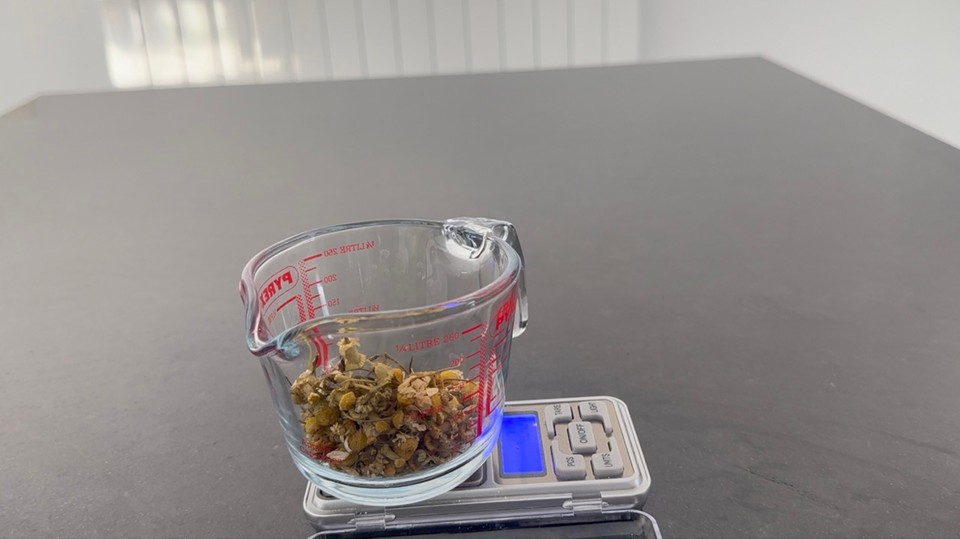
- Add the glycerin.
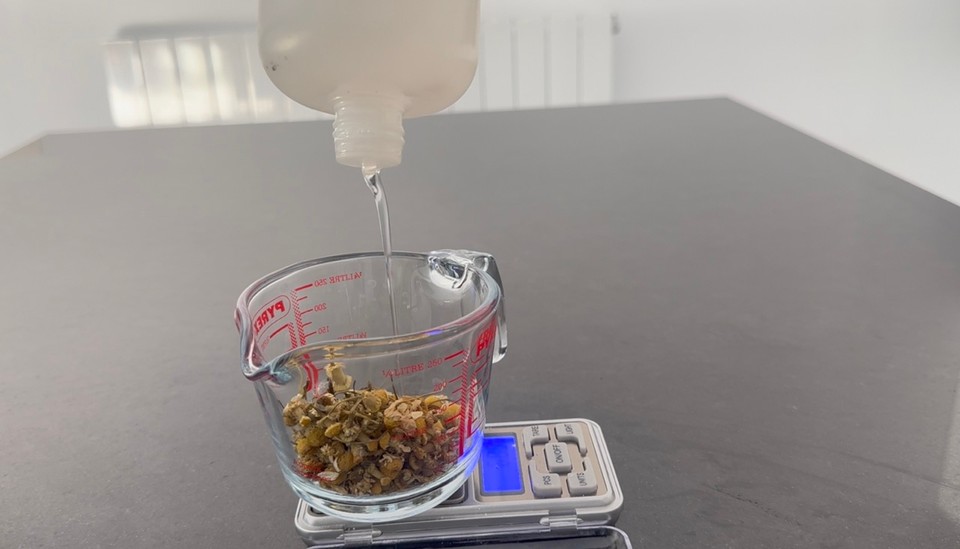
- Make sure the flowers are submerged in the glycerin.
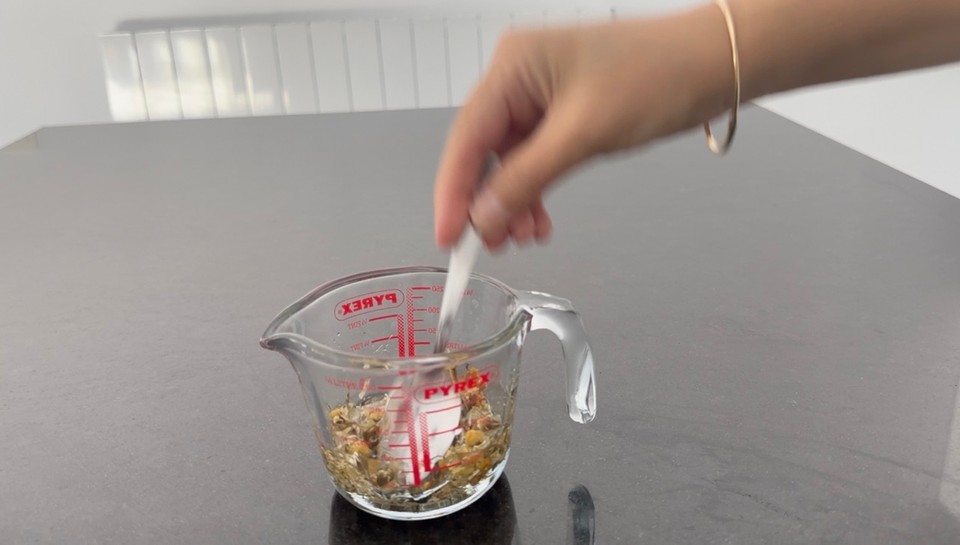
- Cover the beaker and leave it (away from direct light) for 10-20 days to infuse.
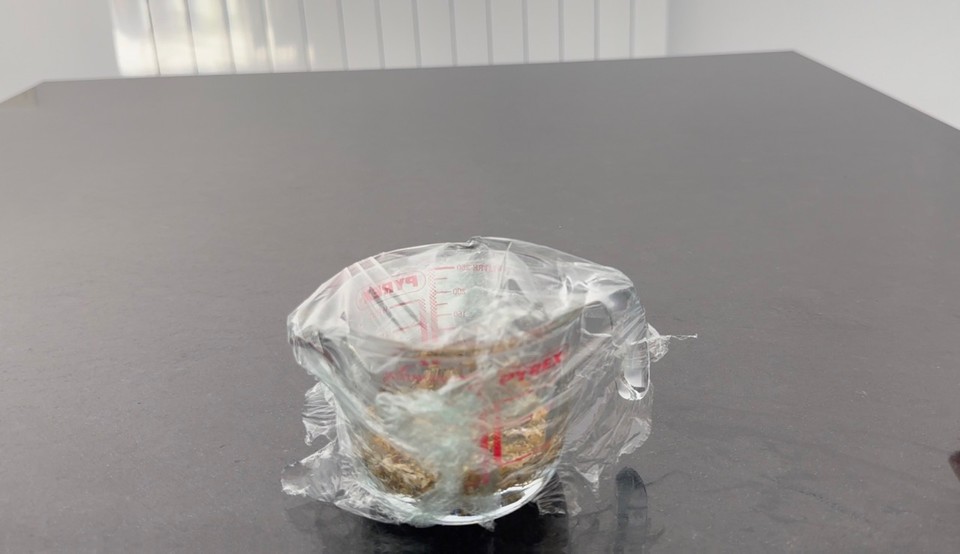
- Strain the flowers using a cheesecloth.
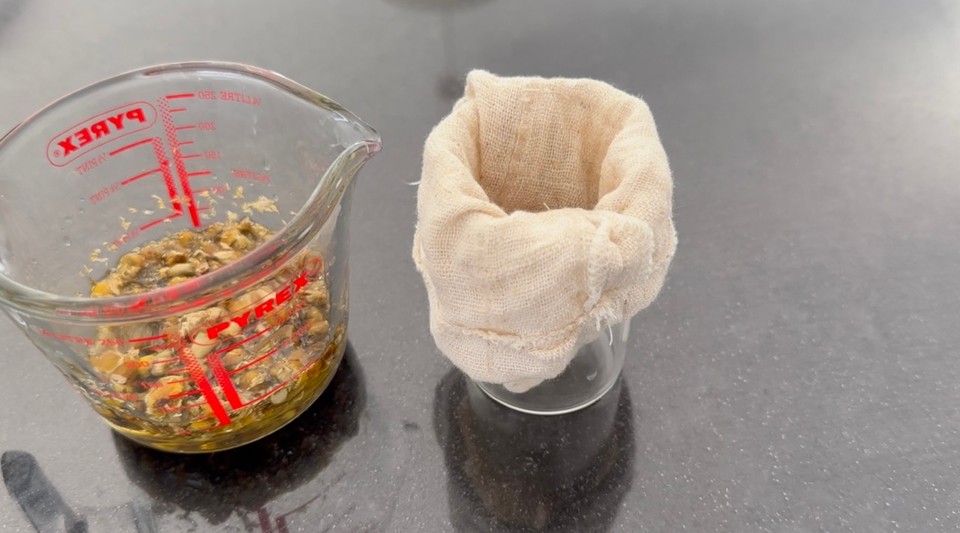
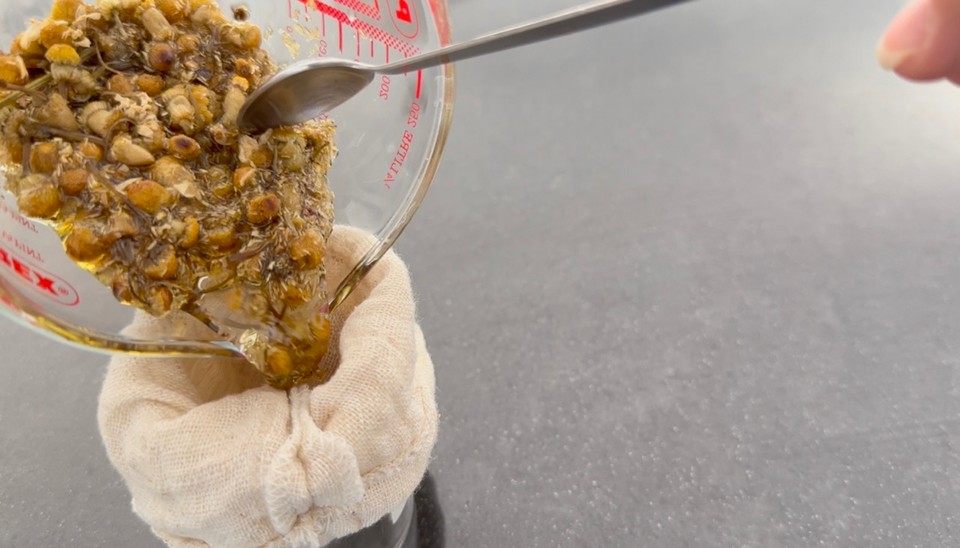

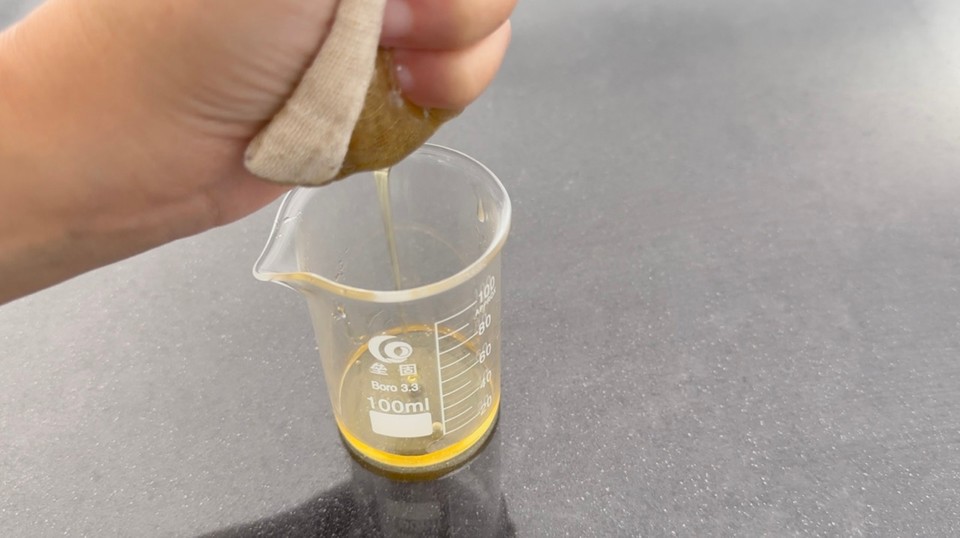
- Store the extract in a dark glass bottle to prolong its shelf life. Exposure to light, especially sunlight, can cause chemical reactions that degrade the active compounds in the extract. This can reduce the potency and effectiveness of the glycerin extract over time. Dark glass bottles help maintain the extract's stability by shielding it from UV rays. Dark glass bottles (such as amber or cobalt blue) are designed to block out UV and visible light, providing better protection than clear glass bottles. Glass is chemically inert and does not interact with the contents of the bottle, making it ideal for storing extracts without the risk of contamination or chemical reactions.
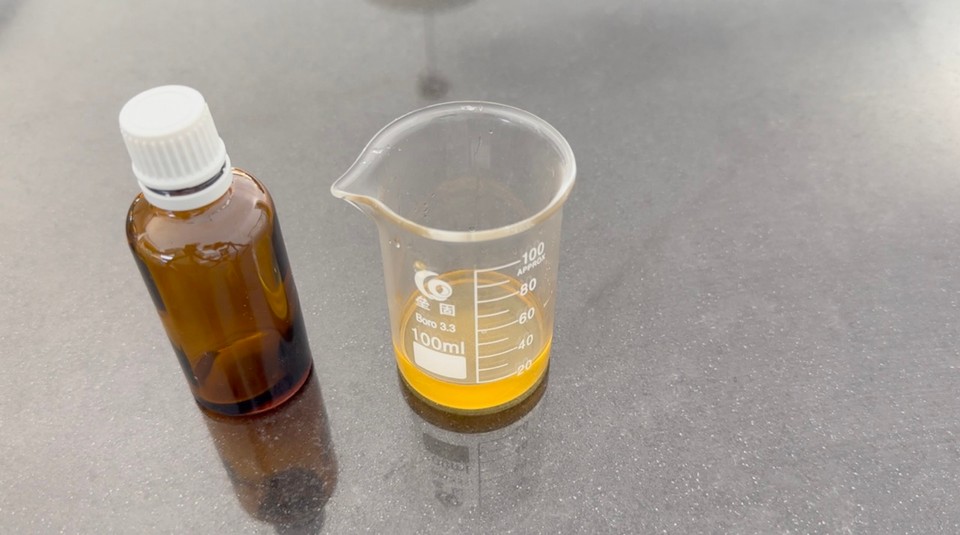
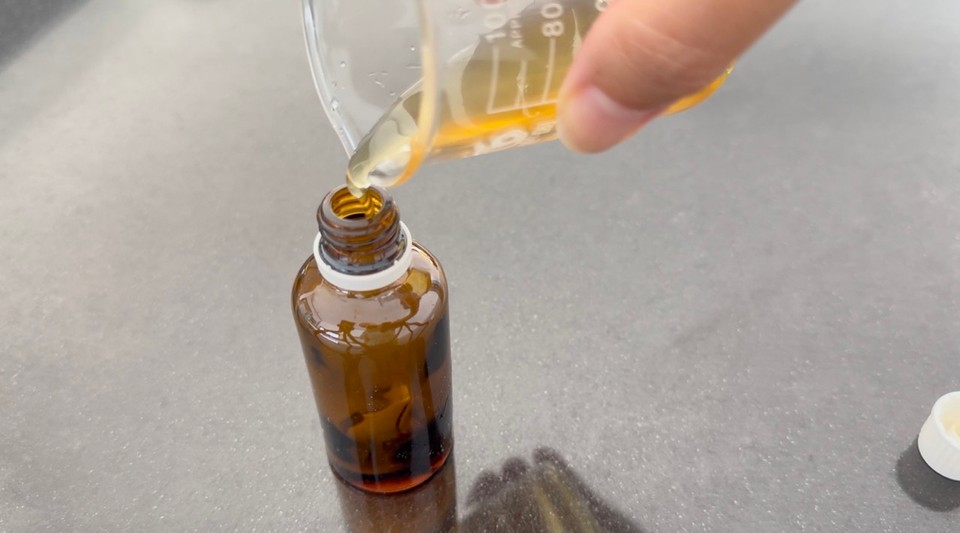
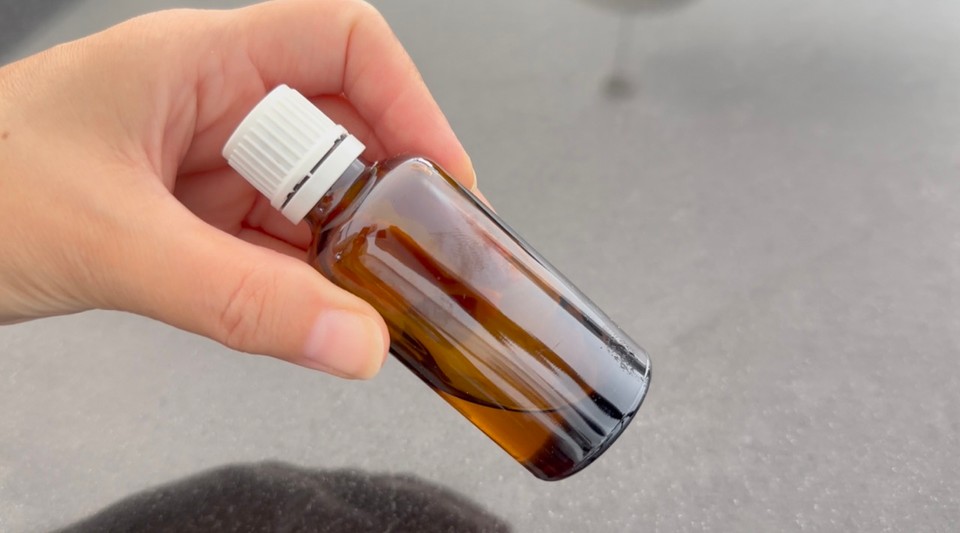
The glycerin extract shelf life is usually 6-12 months. It also depends on the expiration date of your glycerin, vitamin E and dried flowers. I recommend writing (on a sticker or a label) the date you made the extract and its pH and sticking it on the bottle for future reference. This extract can be used in creams and lotions, shower gels, shampoos, hair conditioners, serums, toners, scrubs, face and body mists, and more.
Chamomile all-purpose balm
The balm is ideal for calming and soothing irritated, dry, or sensitive skin. It Provides deep hydration and creates a barrier to prevent moisture loss.
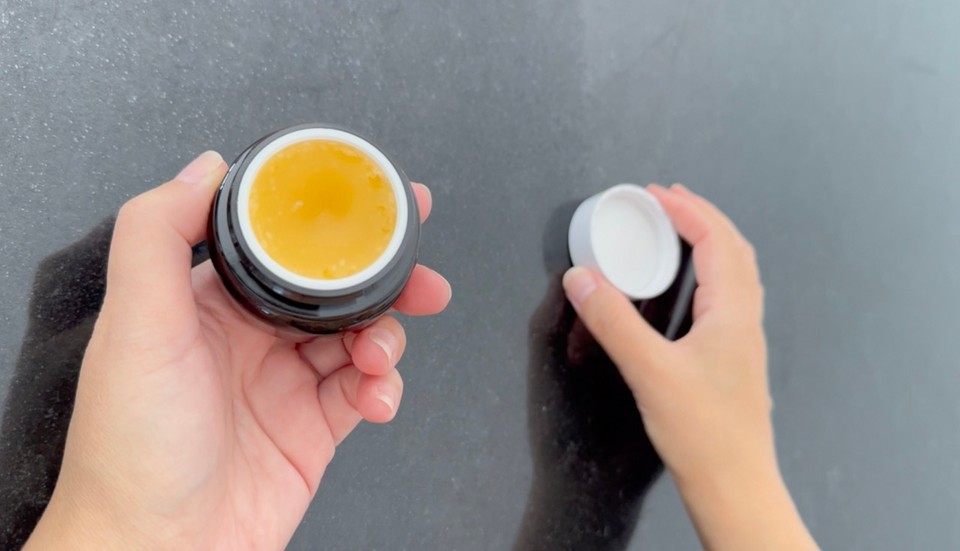
Ingredients for balm version A:
- Chamomile oil 88.6g
- Candelilla wax 9g
- Vitamin E 0.4g
- Lecithin 2g
***You can replace the lecithin with jojoba oil or castor oil.
Ingredients for balm version B:
- Chamomile oil 81.6g
- Beeswax 16g
- Vitamin E 0.4g
- Lecithin 2g
***You can replace the lecithin with jojoba oil or castor oil.
Method:
- In a heat-resistant beaker, add all the ingredients.



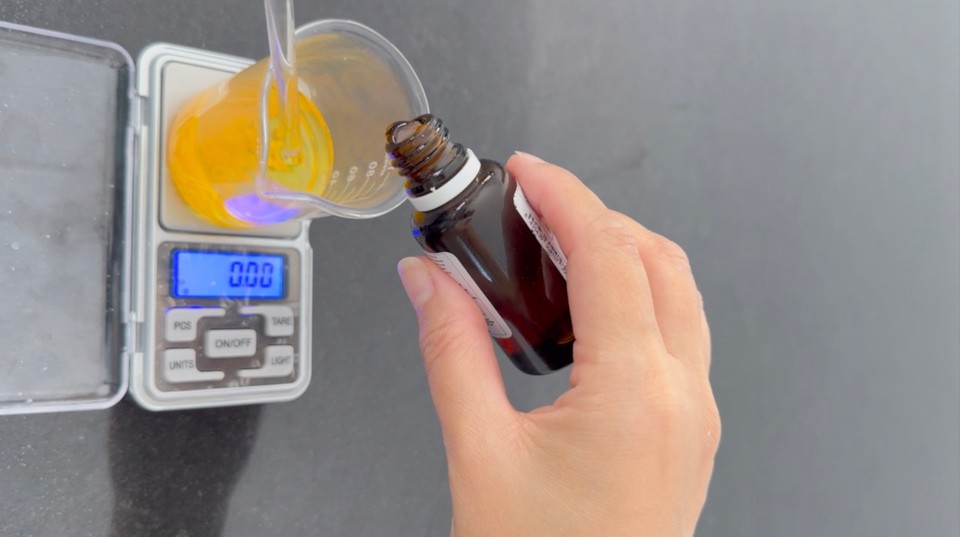
- Place the beaker into a double boiler to melt the wax.
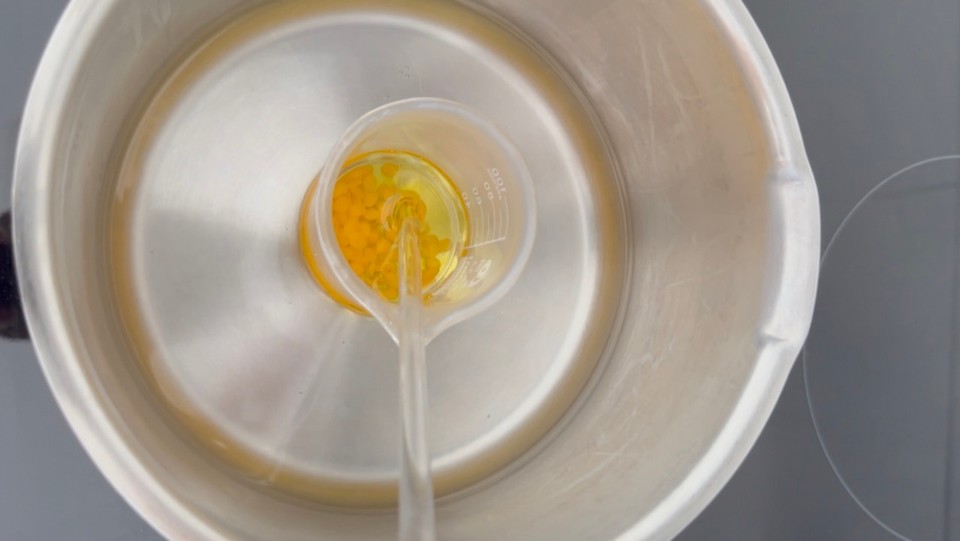
- Remove the beaker from the heat when the wax is completely melted. Stir and pour into a container.
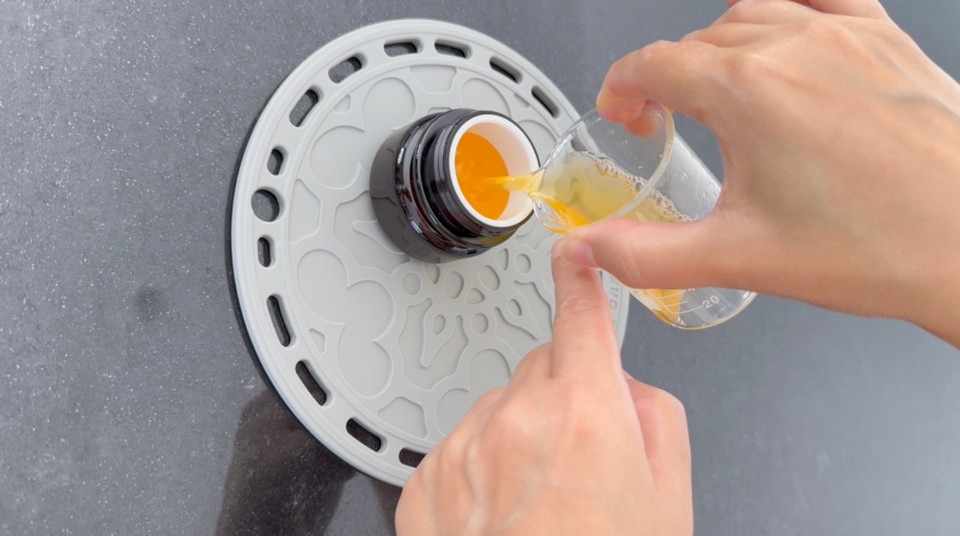
- Apply a small amount of the balm to the affected skin area. Gently massage it in until fully absorbed.
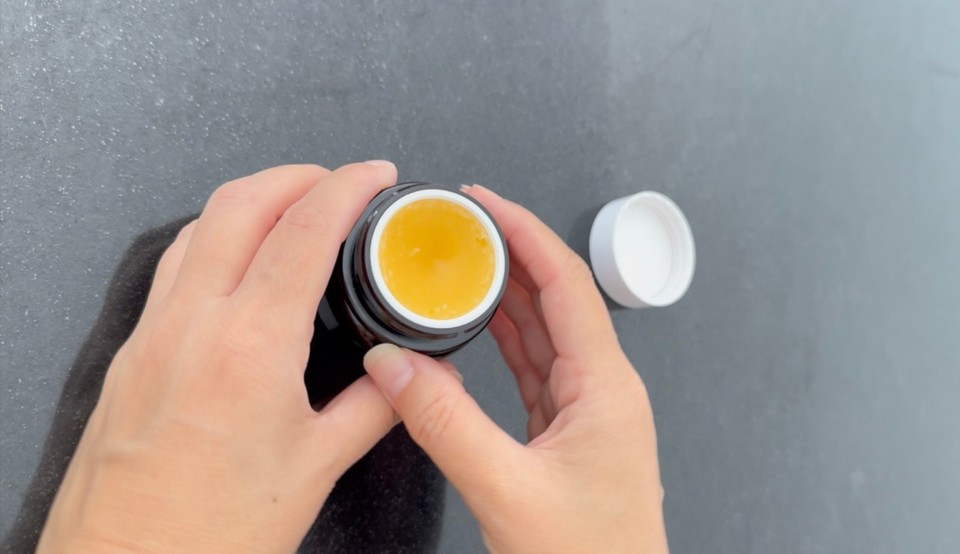
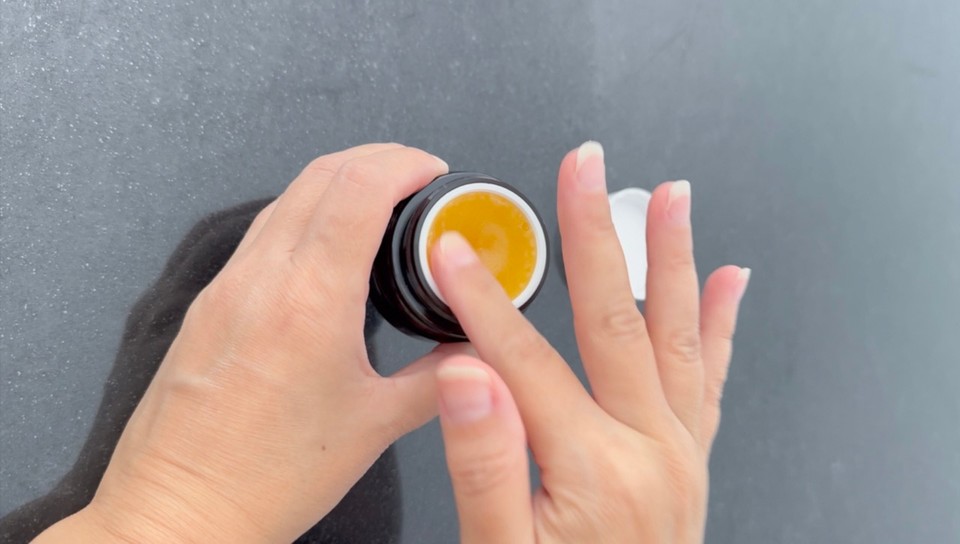
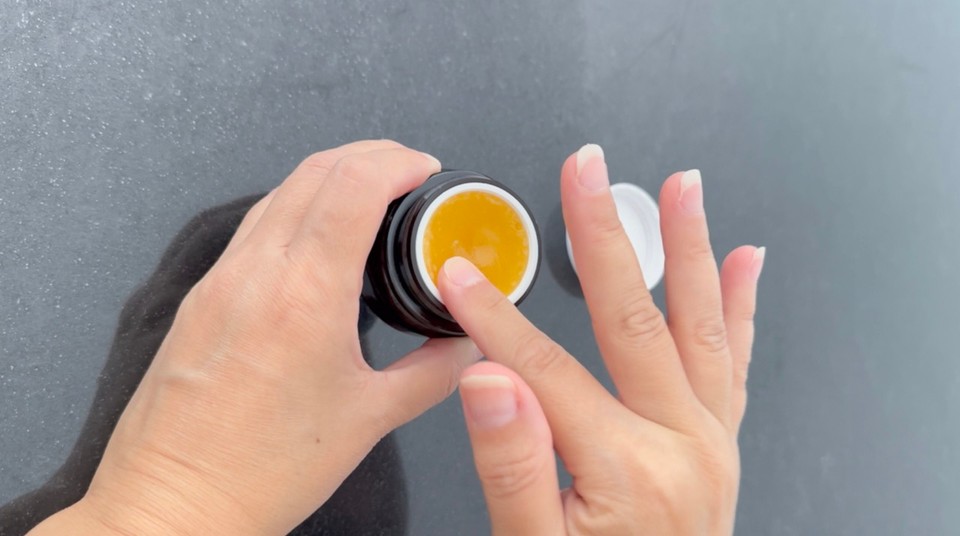
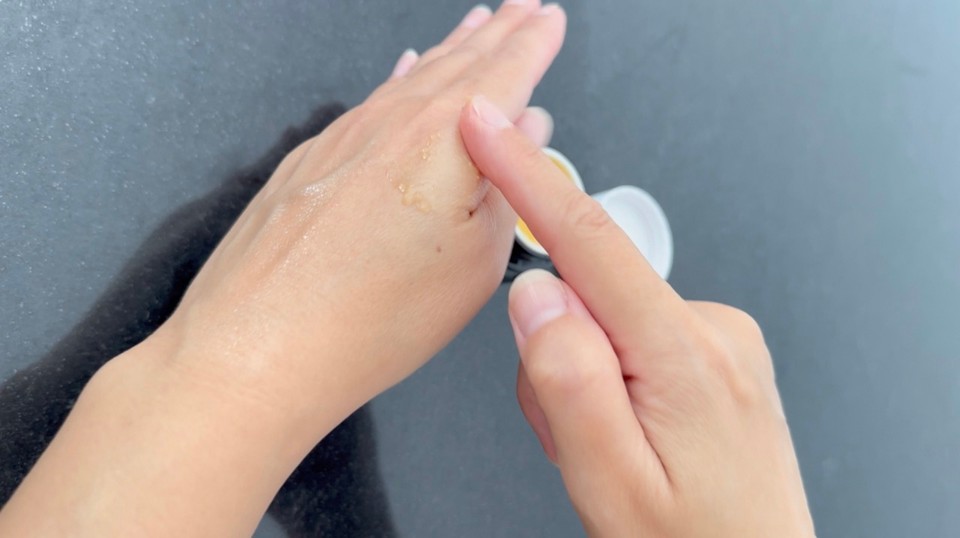
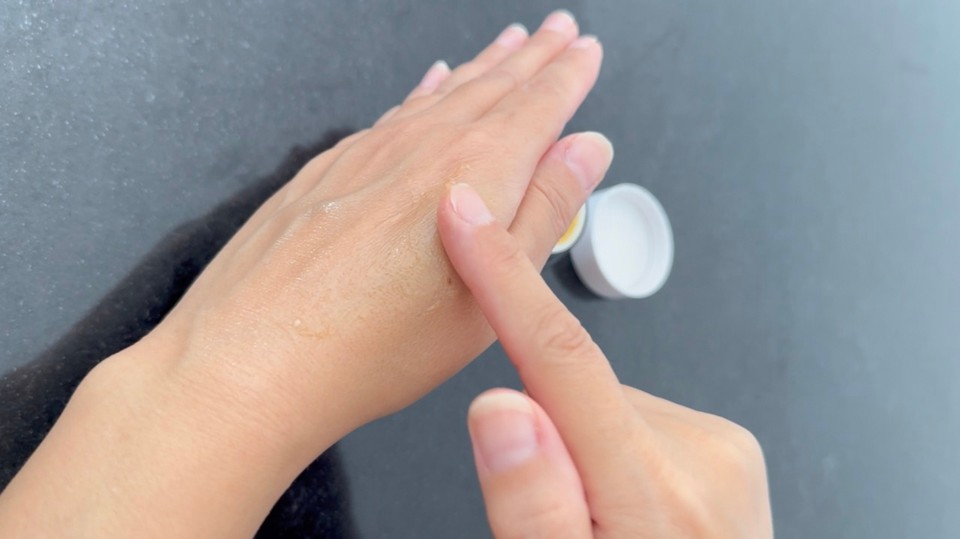
Chamomile Face cream
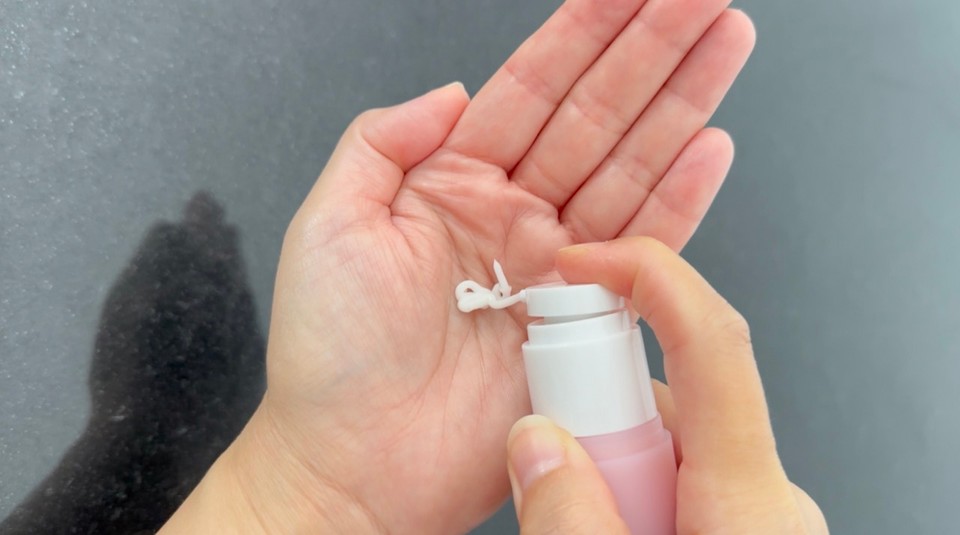
Chamomile face cream, made with chamomile oil and chamomile extract, offers a range of benefits for your skin. It soothes and calms irritated or sensitive skin while providing deep hydration. The cream also protects against environmental damage and helps reduce signs of aging, like fine lines and wrinkles. Additionally, it aids in evening out skin tone and enhancing radiance.
This cream has only a few ingredients, and the chamomile oil and extract are the active ingredients that make it very soothing, with a pleasant, gentle, natural chamomile scent.
Please read this post on how to make lotions and creams if you are a beginner.
Ingredients:
Phase A
- Distilled water 69g
- Glycerin chamomile extract 6.4g
Phase B
- Chamomile oil 16.8g
- Olivem 1000 (INCI: Cetearyl Olivate / Sorbitan Olivate) 4g
- Cetyl alcohol 3g
Phase C
- Cosgard (INCI: Benzyl Alcohol, Dehydroacetic Acid, Aqua) 0.8g
You can replace the cetyl alcohol with Cetearyl Alcohol, Jojoba wax or Shea butter.
You can replace the glycerin extract with Propanediol, Propylene Glycol or Sodium lactate. (Sodium lactate should be added to phase C, the cool down phase and not to phase A).
You can use Polawax, Emulsifying Wax NF, Methyl Glucose Sesquistearate or Montanov ™ L(INCI : C14 -22 Alcohol (and) C12-20 Alkyl Glucoside) as an emulsifier instead of Olivem1000.
If you use another preservative, use it according to your supplier's instructions. If you need 1% preservative, subtract 0.2% from the distilled water.
Method:
- In a heat resistant beaker, add the water phase (phase A) ingredients.


- Cover the water phase beaker to minimize water evaporation (when working with bigger batches, you should scale your water phase before heating and after removing it from the heat. Calculate the water evaporated during the heating and add the missing amount to the water phase beaker).
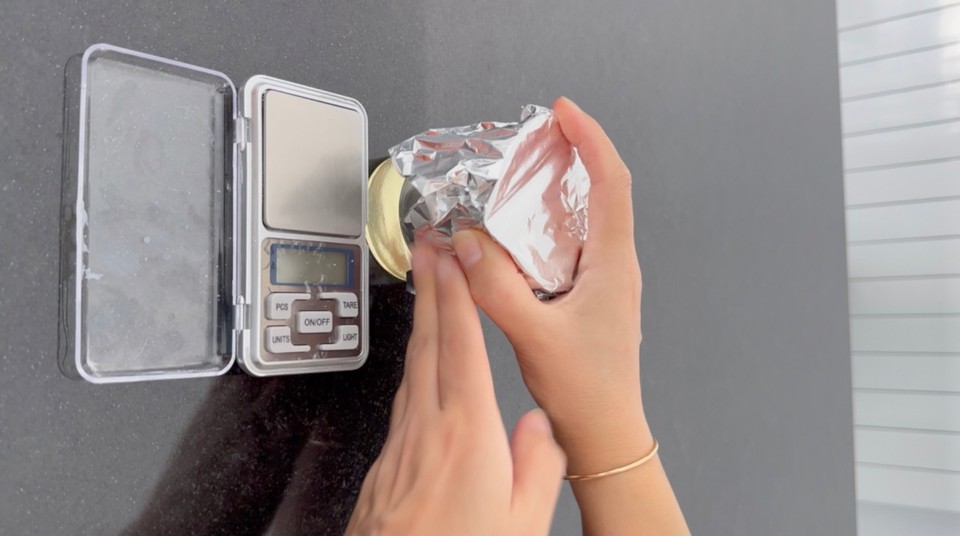
- In another heat resistant beaker, add the oil phase (phase B) ingredients.
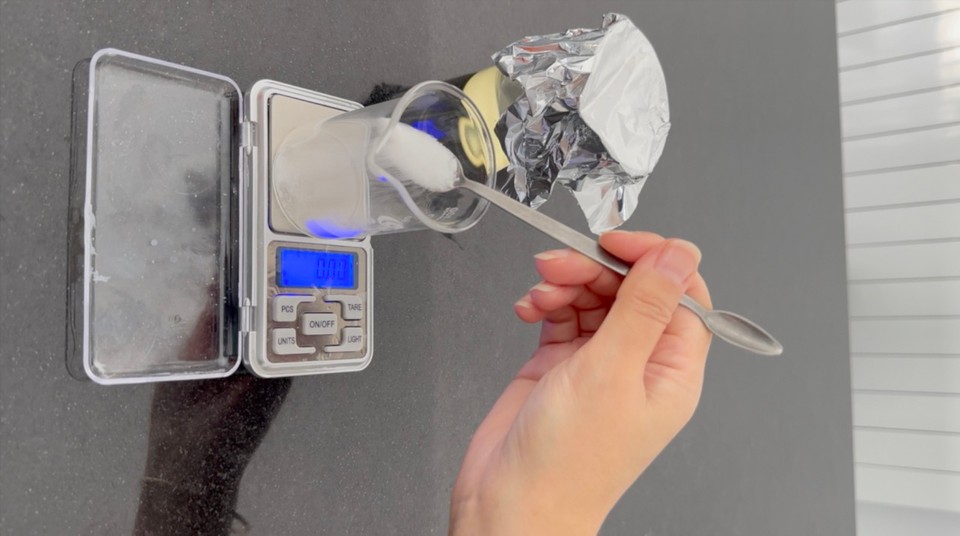
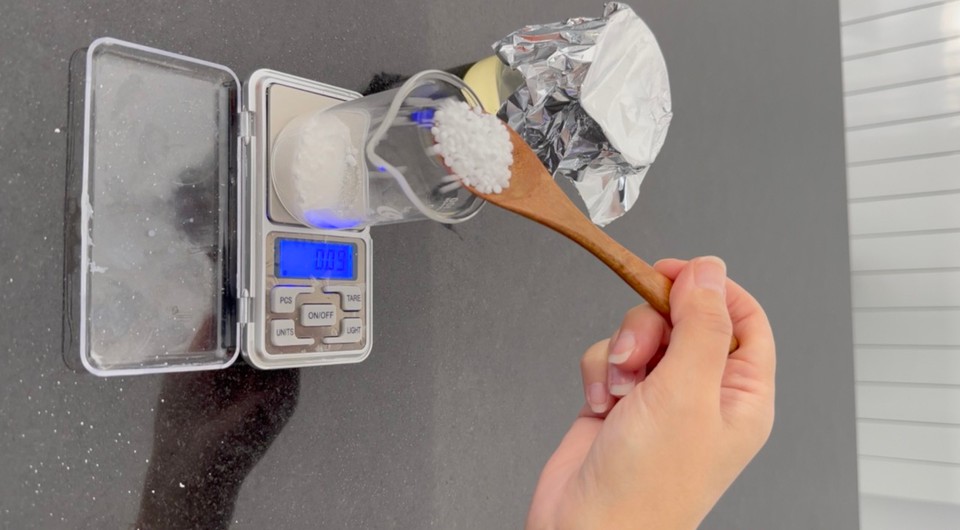
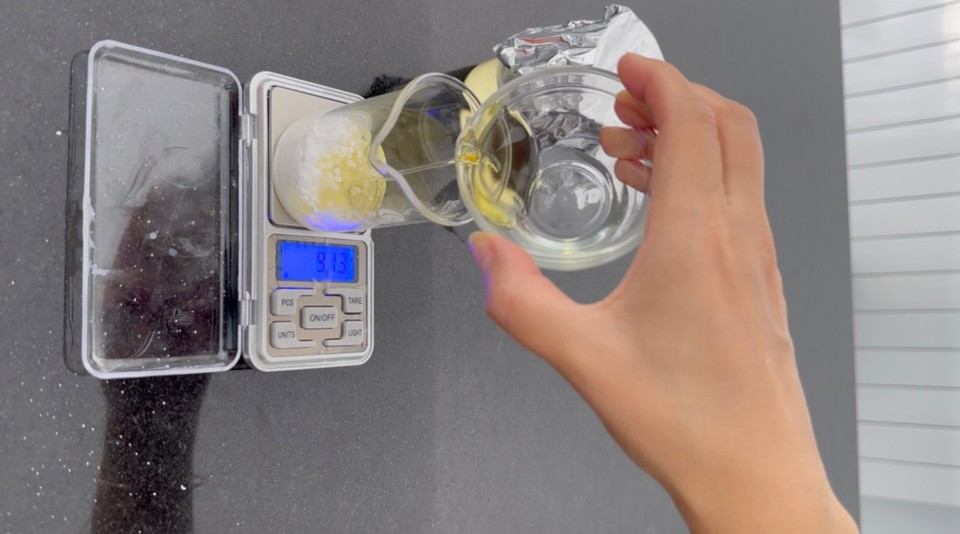
- Place the oil and water phases into a double boiler on medium heat for 15-20 minutes.

After the oil phase has completely melted, remove both phases from the heat.
Pour the water phase into the oil phase and start mixing to combine.
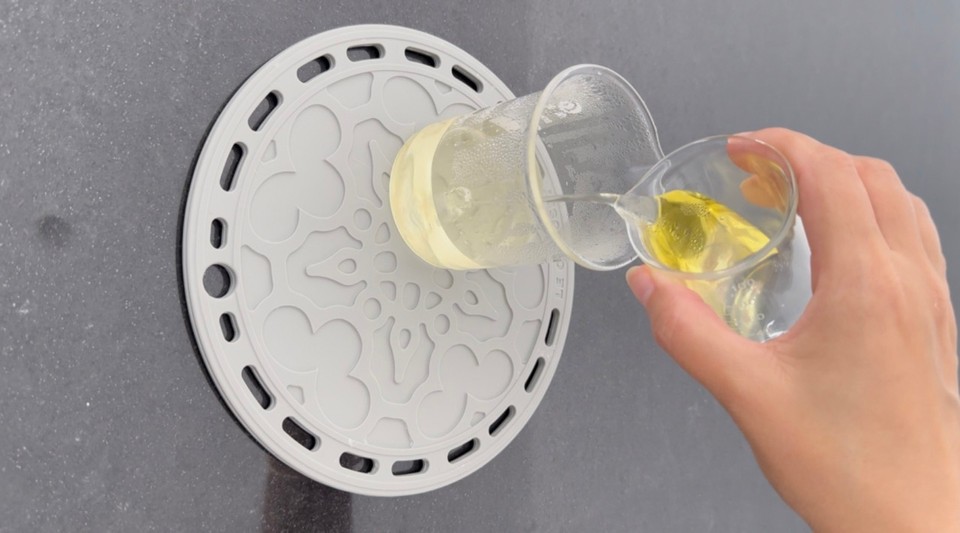
- Mix with an immersion blender or homogenizer to form an emulsion.
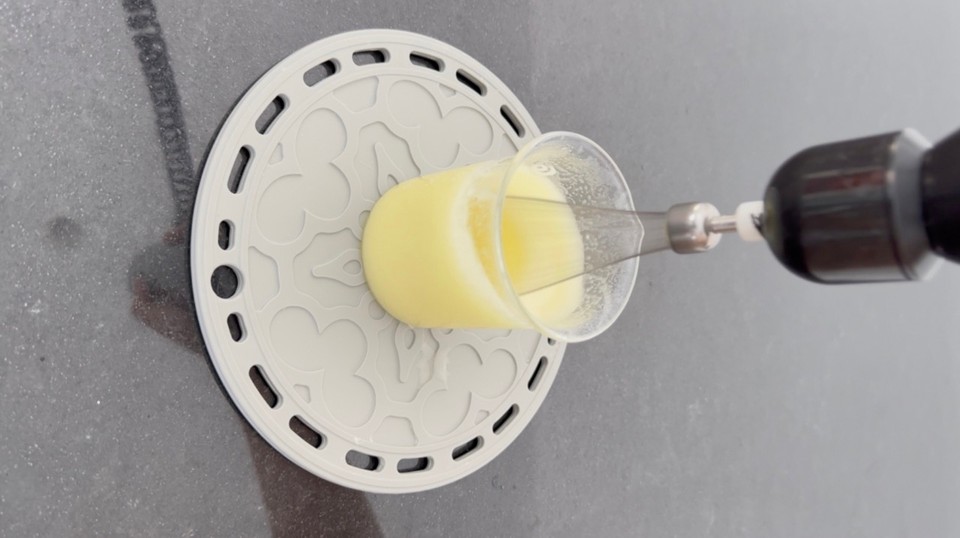
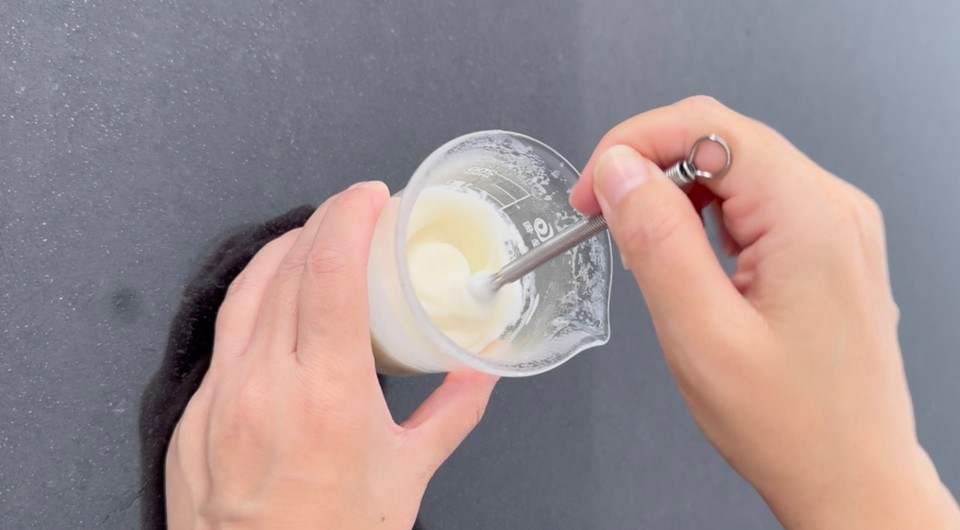
- Check the ph and adjust if necessary once your emulsion has cooled down to less than 40 degrees Celsius. To learn about ph adjustment, please check this post. pH should be 5-6.

- After the ph checking and adjusting, add the cool-down phase (phase C). Mix to combine.
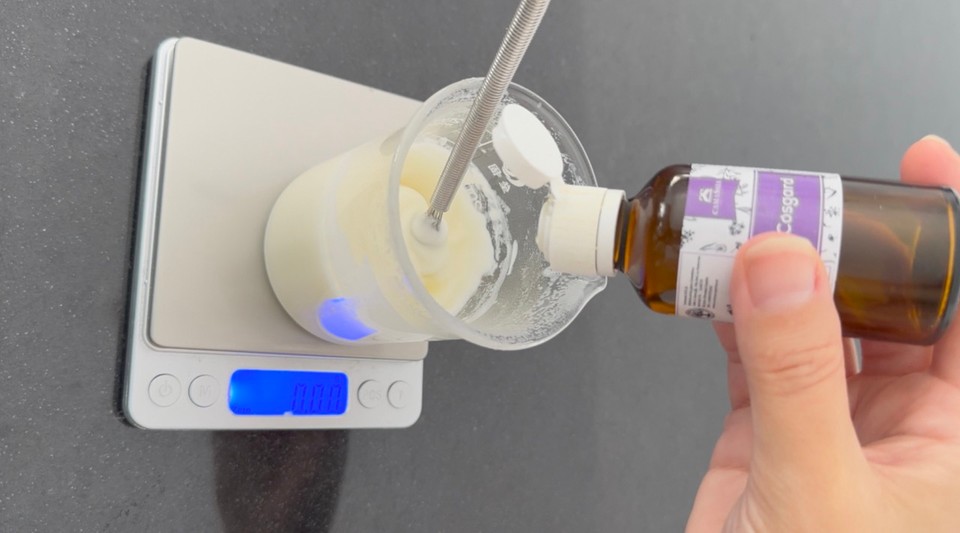
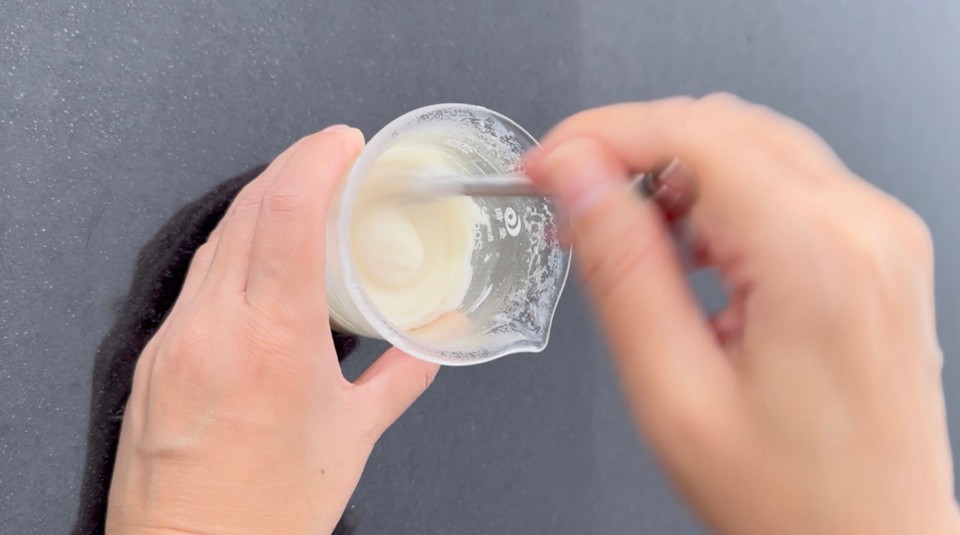
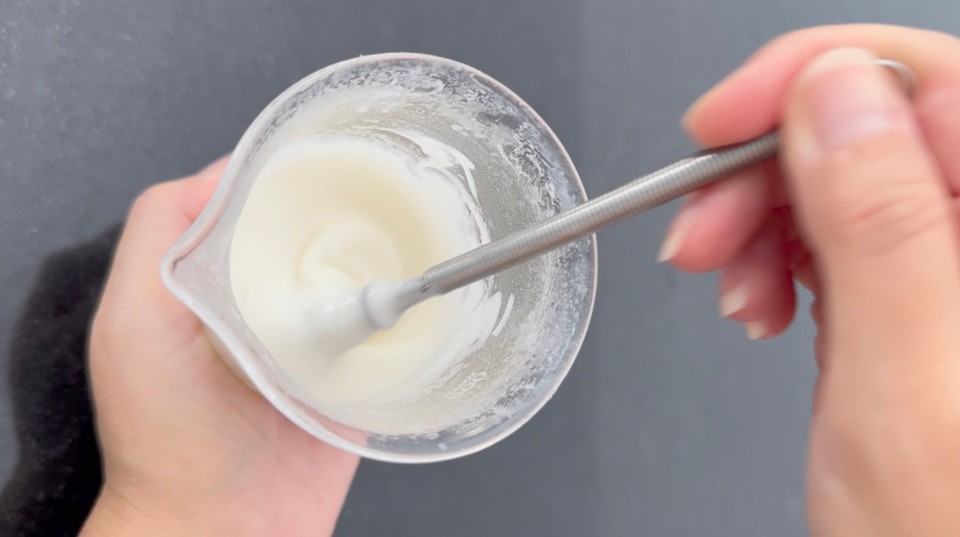
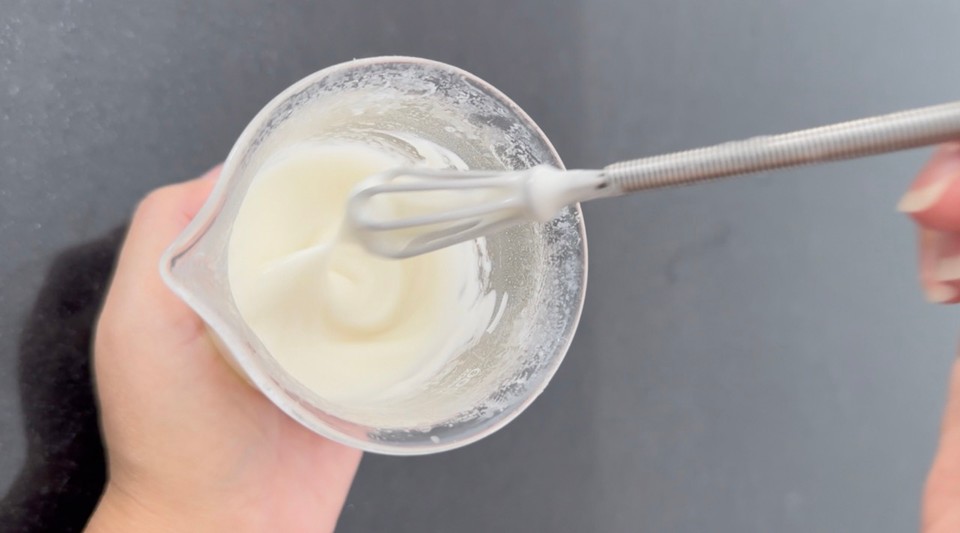
- Pour into a container or a pump bottle. The chamomile cream is ready (final consistency can form after 24 hours depending on the emulsifier you used).

